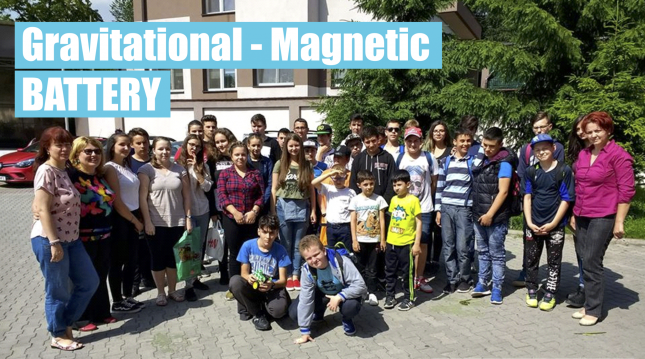Gravitational-Magnetic Battery
This article is part of the KF Plasma Times August 2018
Gravitational-Magnetic Battery
Keywords: plasma battery, electronics, school, Romania.
Published: August 2018.
Objective
Gravitational Magnetic Battery, made by D. I., fifth grade schoolboy at I.D, Sirbu of Petrila, Hunedoara county, Romania. Presented at the Minitehnicus County Contest, organized at the Children's Club in Petrosani on 9 June 2018.
Method
Method: Copper wire 2,5 mm nanocoated with flame 4 times.
GANS used:
10 ml GANS mix - 40% CH3, 18% CO2, 18% ZnO, 18% CuO.
Preparation
Classic GANS made with led connection and nano coils covered by the flame method and 10% salts.
Setup
We used a 9 cm nanocoated copper wire that was rolled over a paper towel that had a mix of GANS. I wrapped the paper napkin with an aluminum foil in the kitchen of 28 cm long and the width of 7, to which I bent 1 cm (from the end). Aluminum overwrap was 9 turns in anti-clockwise direction with 2 cm zinc wire springs.
Application
This battery was tested at the Minitehnicus contest in date 9 June 2018 in Petrosani city, Romania.
Observations
After this plasma battery was developed, a procedure to improve the result was found by replacing the paper briefcase with cotton disks used for women's cleanser.
Results
The Minitehnicus contest measured the battery with a multimeter, and the registered value was 0.64 Volti. The responsible student received the diploma of the 1st place.
References
We mention that D. I. requested to be educated with the information from the plasma science and participated in the theoretical and practical workshops that were made by the members of Plasma Hunedoara Study Group, the Local Laboratory in Petrila, coordinated by Giani Marin Boia and Pelacaci Georgeta Emilia, who are preparing 3 high school persons for Vietnamese lab competitions, along with Physics teacher Cindea Nicoleta from Constantin Brancusi Technical College in Petrila. This project is carried out in collaboration between the "Constantin Brancusi" Technical College in Petrila, with the support of the Plasma Romania Scientific Association and the Keshe Romania Association, and National Institute for Research Development for Mining Security and Explosive Protection. Thank you, Mr. Keshe.


